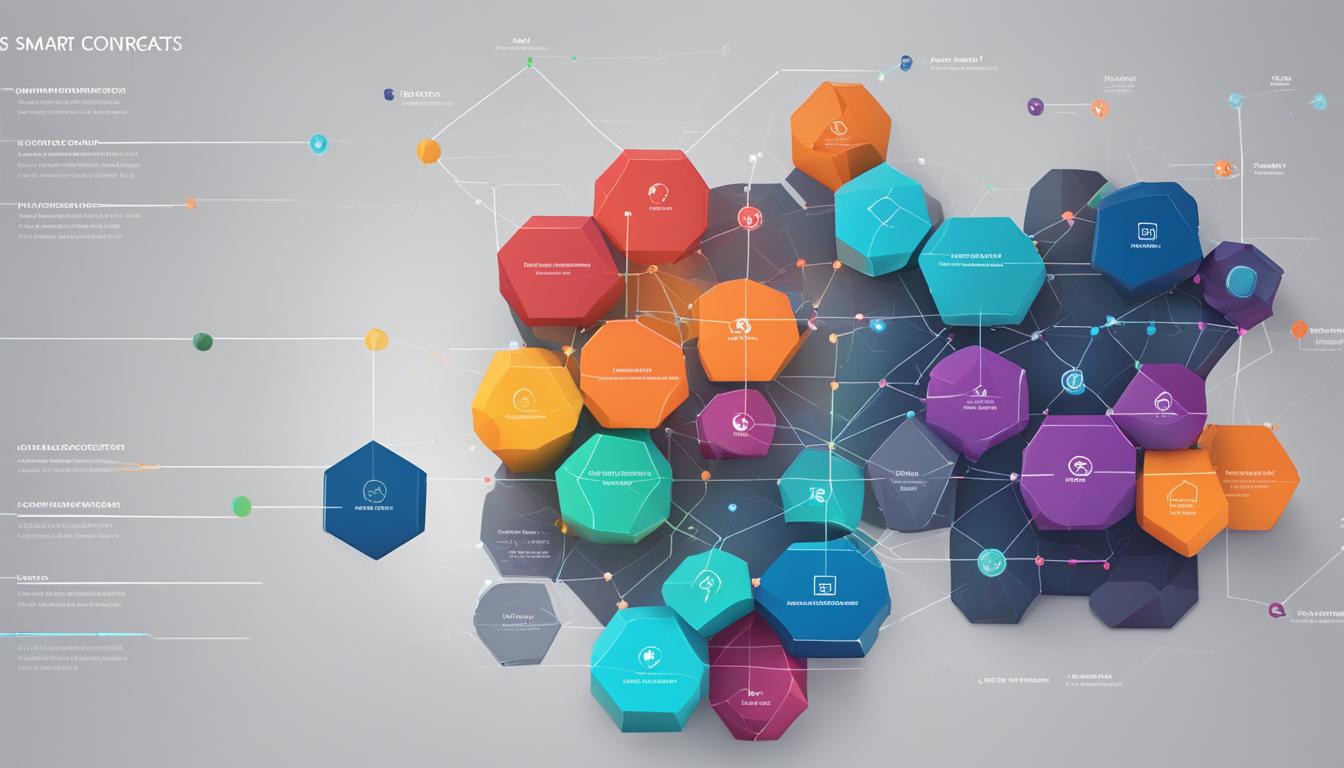Smart contracts, blockchain technology, decentralized applications, digital contracts – these terms have become increasingly prevalent in today’s digital landscape. As the world shifts towards a more decentralized and secure way of conducting transactions, the interoperability of smart contracts is a crucial aspect that needs to be addressed.
Smart contracts are self-executing contracts with their terms encoded into code. They utilize blockchain technology, which provides a decentralized ledger for these contracts, ensuring transparency, security, and immutability. However, a major challenge faced by blockchains is their ability to communicate and interact with each other.
Blockchain technology typically operates in isolation, lacking the capability to connect with other chains. This limitation, known as the oracle problem, hinders the creation of seamless cross-chain transactions. Interoperability protocols are essential for enabling the exchange of data and assets between different blockchains, allowing for the development of cross-chain decentralized applications (dApps) with unified logic across multiple chains.
Key Takeaways:
- Smart contracts are self-executing contracts with terms encoded into code.
- Blockchain technology provides transparency, security, and immutability.
- Interoperability protocols enable the exchange of data and assets between different blockchains.
- Cross-chain dApps have unified logic across multiple chains.
- Interoperability is crucial for the development of a decentralized and secure digital landscape.
What is Blockchain Interoperability?
Blockchain interoperability refers to the ability of blockchains to communicate with each other. Cross-chain messaging protocols enable blockchains to read and write data to other chains, facilitating the development of cross-chain dApps. These dApps have unified logic across smart contracts deployed on different blockchains. Token bridges and arbitrary data messaging protocols are examples of interoperability solutions that support different types of cross-chain interactions, such as token swaps, token bridges, and contract calls.
Token swaps involve trading tokens between different blockchains using atomic swaps or cross-chain automated market makers. Token bridges enable the transfer of assets from one blockchain to another by locking or burning tokens and minting or unlocking them on the destination chain. Native payments allow applications to trigger payments on other chains using their native assets. Contract calls involve calling smart contract functions on different chains, and programmable token bridges combine token bridging and arbitrary messaging to enable richer cross-chain functionality.
To illustrate the concept of blockchain interoperability, consider the following example:
“Blockchain A and Blockchain B are two separate blockchains that operate independently. Through the use of cross-chain messaging protocols, Blockchain A can send data to Blockchain B, allowing users to interact with smart contracts deployed on both chains. This interoperability enables the creation of cross-chain dApps with unified logic, where users can seamlessly transfer tokens and trigger actions across multiple blockchains.”
By enabling cross-chain communication and data exchange, blockchain interoperability paves the way for the development of multi-chain dApps that leverage the strengths of different blockchains. These interoperability solutions play a crucial role in creating a connected ecosystem where users can seamlessly interact with various blockchain networks, unlocking new possibilities for decentralized applications and the broader adoption of blockchain technology.
Table: Types of Blockchain Interoperability Solutions
| Interoperability Solution | Description |
|---|---|
| Token Swaps | Trading tokens between different blockchains using atomic swaps or cross-chain automated market makers. |
| Token Bridges | Enabling the transfer of assets from one blockchain to another by locking or burning tokens and minting or unlocking them on the destination chain. |
| Native Payments | Allows applications to trigger payments on other chains using their native assets. |
| Contract Calls | Calling smart contract functions on different chains. |
| Programmable Token Bridges | Combining token bridging and arbitrary messaging to enable richer cross-chain functionality. |
The Importance of Blockchain Interoperability
The blockchain landscape is evolving into a multi-chain world, with various layer-1 blockchains and layer-2 networks operating simultaneously. Each blockchain is designed with its own set of features and trade-offs, resulting in a diverse ecosystem of scalable ecosystems. However, the lack of interoperability between these chains poses a challenge for maintaining a single global state and unified liquidity across the entire blockchain space.
Interoperability is crucial for enabling seamless integration and collaboration between different blockchain ecosystems. It allows for the exchange of data and assets between blockchains, bridging the gap between traditional systems and decentralized technologies. With blockchain interoperability, organizations can interact with different blockchains without the need to build separate implementations for each interaction, saving time and resources.
Moreover, blockchain interoperability opens up new possibilities for creating cross-chain decentralized applications (dApps) that leverage the strengths of multiple blockchains. By combining the capabilities of different chains, developers can create dApps with enhanced functionalities, scalability, and efficiency. This paves the way for innovation in various industries, including finance, supply chain, healthcare, and more.
| Benefits of Blockchain Interoperability |
|---|
| Enables seamless exchange of data and assets between blockchains |
| Facilitates integration and collaboration between diverse blockchain ecosystems |
| Reduces the need for separate implementations for each blockchain interaction |
| Allows for the development of cross-chain dApps with enhanced functionalities |
| Opens up new possibilities for innovation in various industries |
Blockchain interoperability is a key enabler for the future of decentralized technologies. It bridges the gap between different blockchains and traditional systems, creating a unified and scalable ecosystem. With interoperability, organizations can unlock the full potential of blockchain technology, revolutionizing transactions and transforming the digital landscape.
Types of Blockchain Interoperability Solutions
Blockchain interoperability solutions are designed to enable seamless communication and data exchange between different blockchains. There are several types of solutions that facilitate interoperability, each serving a specific purpose and use case.
1. Token Swaps
Token swaps allow for the exchange of tokens between different blockchains. This can be done through atomic swaps, which are trustless and secure transactions that occur directly between two parties without the need for intermediaries. Cross-chain automated market makers (AMMs) are another popular method for token swaps, providing liquidity and enabling efficient trading between different chains.
2. Token Bridges
Token bridges facilitate the transfer of assets from one blockchain to another. This is achieved by locking or burning tokens on the source chain and minting or unlocking them on the destination chain. Token bridges enable seamless asset transfers and help maintain liquidity across different blockchains. They play a crucial role in enabling cross-chain decentralized finance (DeFi) applications.
3. Native Payments
Native payments allow applications to trigger payments on other chains using their native assets. This means that applications can interact with and make payments in different blockchains without the need for additional conversions or intermediaries. Native payments enhance interoperability by enabling direct transactions between chains and expanding the utility of native assets in the blockchain ecosystem.
4. Contract Calls
Contract calls enable the execution of smart contract functions on different blockchains. This means that smart contracts deployed on one chain can interact with and trigger functions on another chain. Contract calls enable cross-chain logic and functionality, allowing for the development of more complex and interconnected decentralized applications. These interactions can be facilitated through cross-chain communication protocols and interoperability frameworks.
5. Programmable Token Bridges
Programmable token bridges combine token bridging capabilities with arbitrary data messaging protocols. This enables richer cross-chain functionality by allowing the transfer of not only assets but also data and instructions between different blockchains. Programmable token bridges enhance interoperability by providing a more comprehensive solution for multi-chain communication and coordination.

Overall, these different types of blockchain interoperability solutions are essential for enabling seamless communication, data exchange, and asset transfers between different blockchains. They play a vital role in expanding the functionality and potential of blockchain technology, facilitating the development of cross-chain decentralized applications, and creating a more interconnected and efficient blockchain ecosystem.
How Does Blockchain Interoperability Work?
Blockchain interoperability is achieved through various approaches that enable communication and data exchange between different blockchains. These approaches include cross-chain protocols, atomic swaps, relays, blockchain routers, and sidechains.
The main method for achieving blockchain interoperability is through cross-chain protocols. These protocols establish rules and standards for communication and data transfer between blockchains. They enable blockchains to read and write data to other chains, ensuring seamless interoperability.
Atomic swaps are another key element of blockchain interoperability. They enable trustless token exchanges across different blockchains. Atomic swaps allow users to swap tokens without the need for a centralized exchange, ensuring secure and transparent transactions.
Relays play a crucial role in blockchain interoperability by allowing blockchains to monitor activities on other chains. They validate central headers and transaction histories, ensuring the integrity and accuracy of cross-chain data exchange.
Blockchain routers act as intermediaries, facilitating communication between different blockchains. They enable the transfer of data and assets between chains, ensuring seamless interoperability and enabling the development of cross-chain applications.
Sidechains also contribute to blockchain interoperability by enabling two active blockchains to communicate with each other through a cross-chain communication protocol. This allows for the exchange of data and assets between chains, expanding the possibilities for decentralized applications.
Conclusion
Blockchain interoperability is set to revolutionize transactions in the digital landscape. With the ability to seamlessly exchange data and assets between different blockchains, the potential of smart contracts and decentralized applications (dApps) is greatly expanded.
By overcoming the challenges of blockchain isolation, interoperability fosters cross-chain communication, enabling secure and efficient transactions. This breakthrough technology opens up new horizons for the digital landscape, paving the way for a future where blockchain-powered solutions can thrive.
As the blockchain ecosystem continues to evolve, the importance of interoperability will only increase in significance. By connecting different blockchains and enabling them to work harmoniously, blockchain interoperability has the power to transform how transactions are conducted, making them more seamless, transparent, and reliable.
FAQ
What are smart contracts?
Smart contracts are self-executing contracts with the terms of the agreement written into code.
What is blockchain technology?
Blockchain technology provides a decentralized ledger for smart contracts, making transactions auditable and immutable.
What is blockchain interoperability?
Blockchain interoperability refers to the ability of blockchains to communicate with each other.
How do cross-chain messaging protocols enable blockchain interoperability?
Cross-chain messaging protocols allow blockchains to read and write data to other chains, facilitating the development of cross-chain decentralized applications (dApps).
Why is blockchain interoperability important?
Blockchain interoperability is crucial for maintaining a single global state and unified liquidity across different blockchains. It also allows traditional systems to interact with different blockchains without building separate implementations for each interaction.
What are some types of blockchain interoperability solutions?
Some types of blockchain interoperability solutions include token swaps, token bridges, native payments, contract calls, and programmable token bridges.
How does blockchain interoperability work?
Blockchain interoperability is achieved through approaches such as atomic swaps, relays, blockchain routers, and sidechains, each providing different levels of data and asset exchange between blockchains.
How does blockchain interoperability revolutionize transactions?
Blockchain interoperability allows for the seamless exchange of data and assets between different blockchains, expanding the potential of decentralized applications and enhancing the efficiency and security of online transactions.
Source Links
- https://chain.link/education-hub/blockchain-interoperability
- https://www.eastnets.com/events/top-technology-trends-in-combating-financial-crime
- https://cointelegraph.com/learn/what-is-blockchain-interoperability-a-beginners-guide-to-cross-chain-technology
- Understanding Bitcoin: Your Ultimate Guide to Bitcoin and Altcoins - October 15, 2024
- Introduction to Cryptocurrencies - October 14, 2024
- Bitcoin Mining and Blockchain - October 12, 2024






